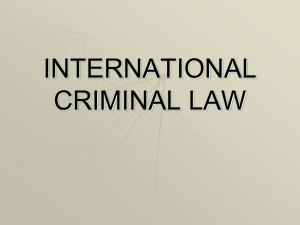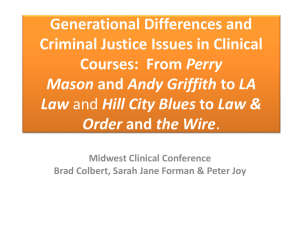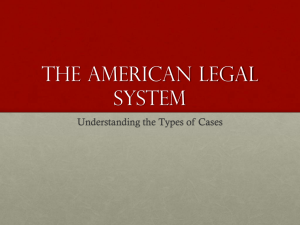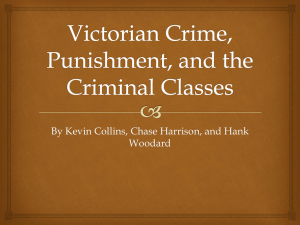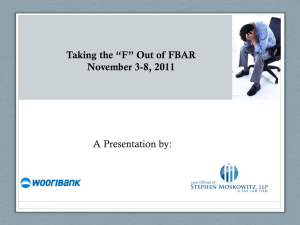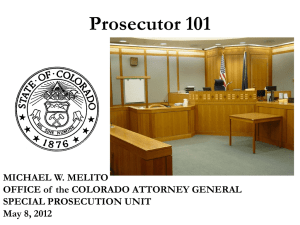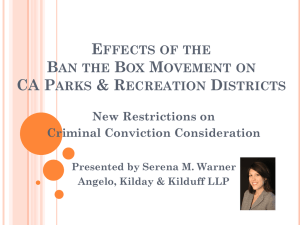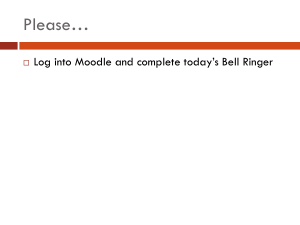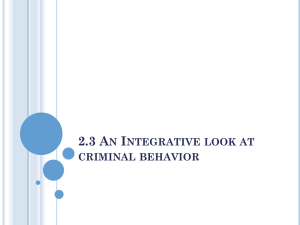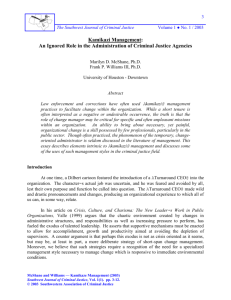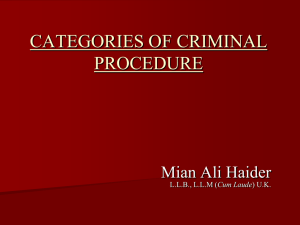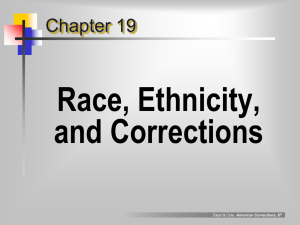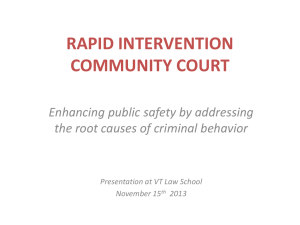Using the placeholders
advertisement
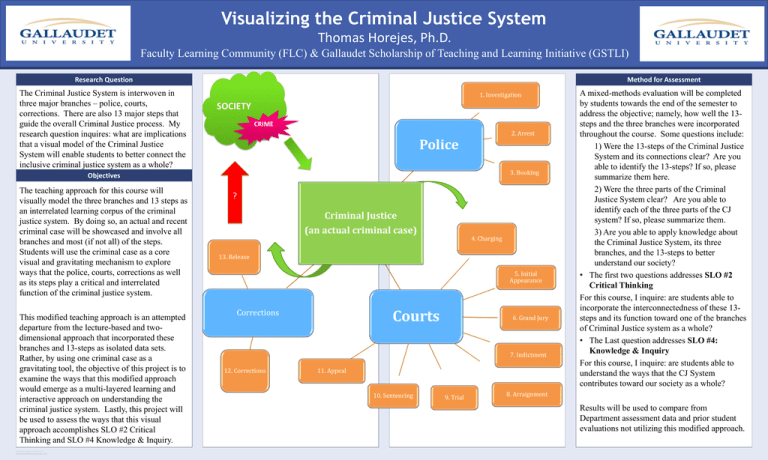
Visualizing the Criminal Justice System Thomas Horejes, Ph.D. Faculty Learning Community (FLC) & Gallaudet Scholarship of Teaching and Learning Initiative (GSTLI) Research Question The Criminal Justice System is interwoven in three major branches – police, courts, corrections. There are also 13 major steps that guide the overall Criminal Justice process. My research question inquires: what are implications that a visual model of the Criminal Justice System will enable students to better connect the inclusive criminal justice system as a whole? Method for Assessment 1. Investigation SOCIETY CRIME 2. Arrest Police 3. Booking Objectives The teaching approach for this course will visually model the three branches and 13 steps as an interrelated learning corpus of the criminal justice system. By doing so, an actual and recent criminal case will be showcased and involve all branches and most (if not all) of the steps. Students will use the criminal case as a core visual and gravitating mechanism to explore ways that the police, courts, corrections as well as its steps play a critical and interrelated function of the criminal justice system. This modified teaching approach is an attempted departure from the lecture-based and twodimensional approach that incorporated these branches and 13-steps as isolated data sets. Rather, by using one criminal case as a gravitating tool, the objective of this project is to examine the ways that this modified approach would emerge as a multi-layered learning and interactive approach on understanding the criminal justice system. Lastly, this project will be used to assess the ways that this visual approach accomplishes SLO #2 Critical Thinking and SLO #4 Knowledge & Inquiry. RESEARCH POSTER PRESENTATION DESIGN © 2011 www.PosterPresentations.com ? Criminal Justice (an actual criminal case) 4. Charging 13. Release 5. Initial Appearance Courts Corrections 6. Grand Jury 7. Indictment 12. Corrections 11. Appeal 10. Sentencing 9. Trial A mixed-methods evaluation will be completed by students towards the end of the semester to address the objective; namely, how well the 13steps and the three branches were incorporated throughout the course. Some questions include: 1) Were the 13-steps of the Criminal Justice System and its connections clear? Are you able to identify the 13-steps? If so, please summarize them here. 2) Were the three parts of the Criminal Justice System clear? Are you able to identify each of the three parts of the CJ system? If so, please summarize them. 3) Are you able to apply knowledge about the Criminal Justice System, its three branches, and the 13-steps to better understand our society? • The first two questions addresses SLO #2 Critical Thinking For this course, I inquire: are students able to incorporate the interconnectedness of these 13steps and its function toward one of the branches of Criminal Justice system as a whole? • The Last question addresses SLO #4: Knowledge & Inquiry For this course, I inquire: are students able to understand the ways that the CJ System contributes toward our society as a whole? 8. Arraignment Results will be used to compare from Department assessment data and prior student evaluations not utilizing this modified approach.

